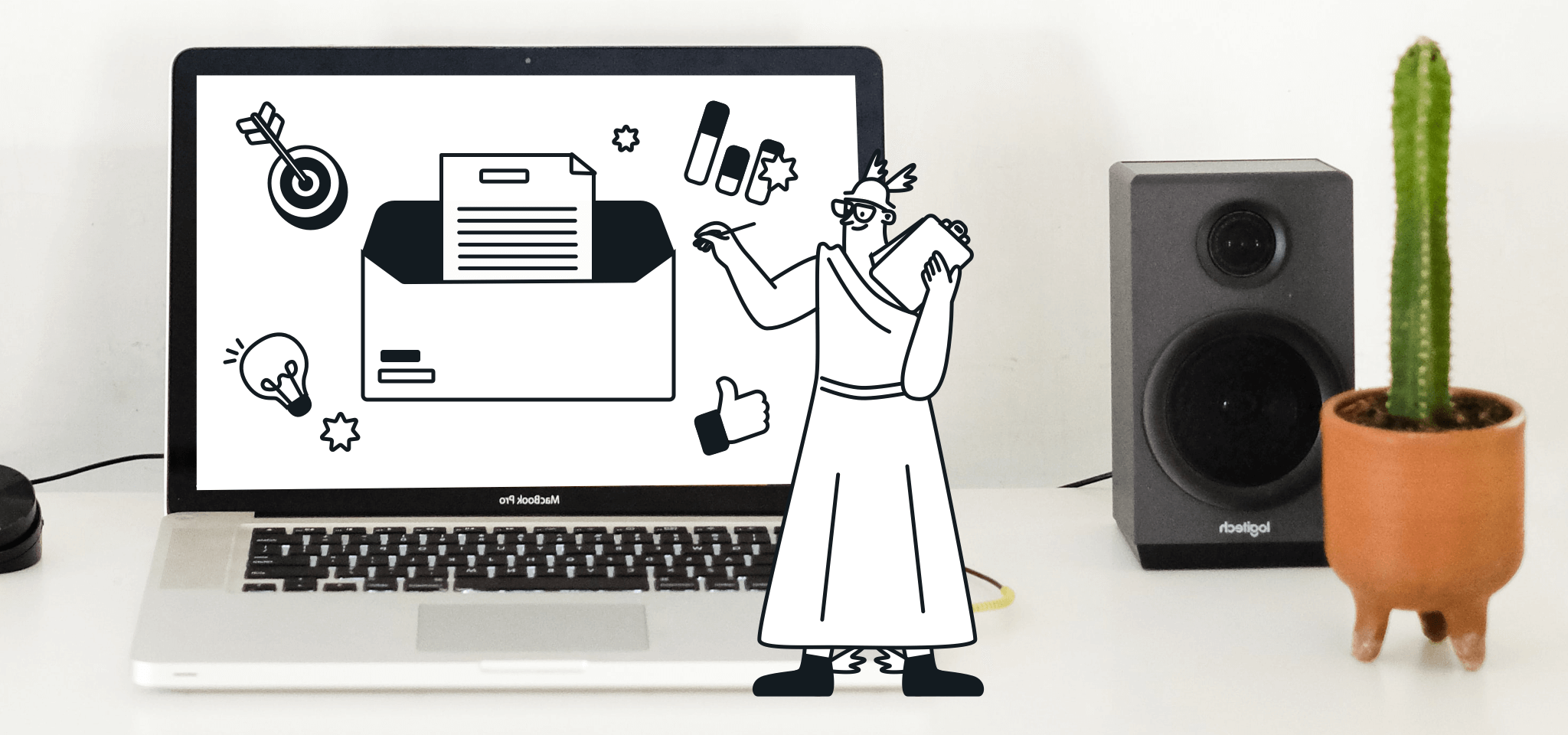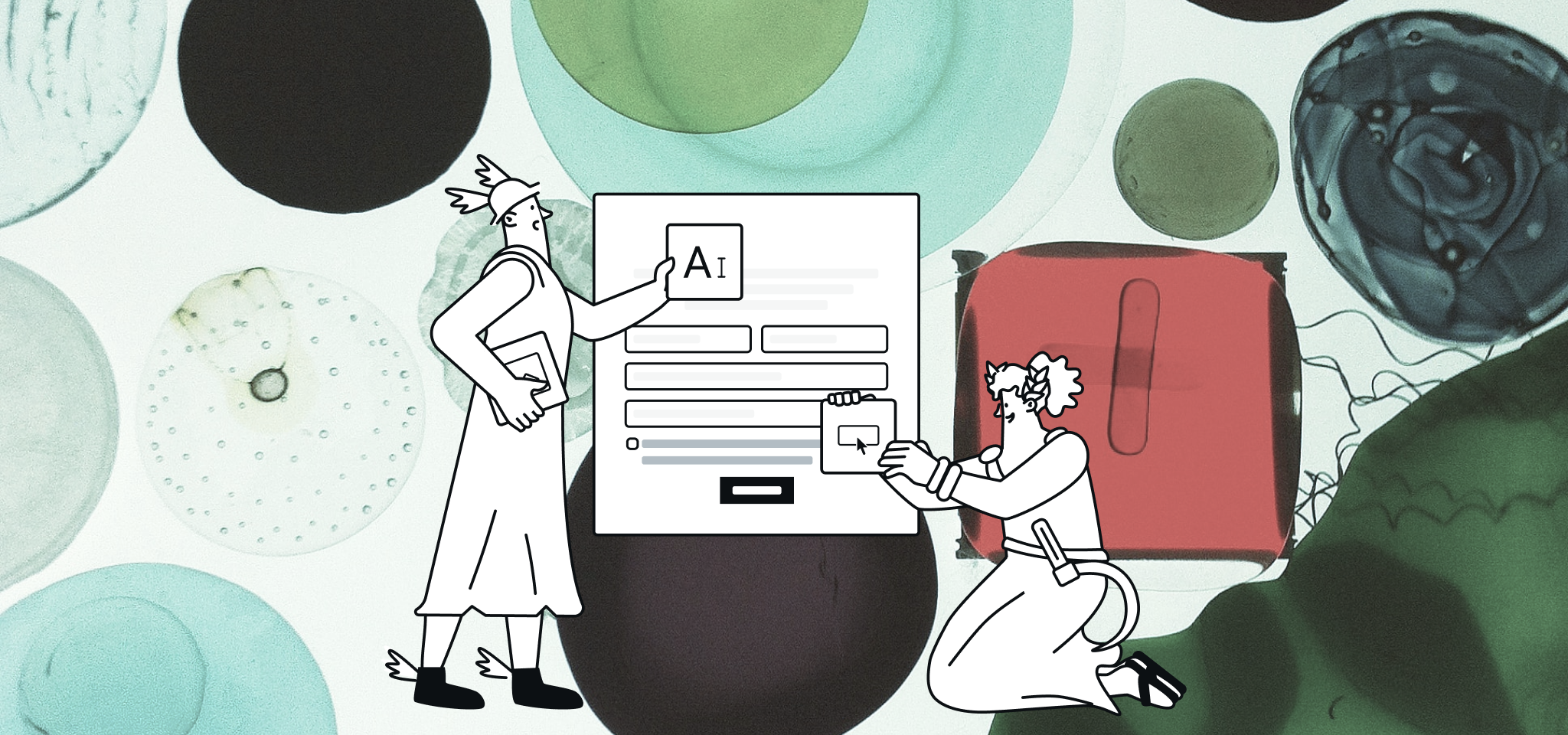Home
The Mailjet Blog
Email best practices
Email Marketing: The 5 People You’ll Need on Your Email Team
Email Best Practices
The 5 people you’ll need on your email team
Email marketing is increasingly becoming a team sport as email has shifted from plain text memos to HTML layouts, and now to dynamic content. There is more people involved in any single campaign than ever before, so it’s time to take stock of who’s on your team and what role they play.

PUBLISHED ON
Email marketing is increasingly becoming a team sport as email has shifted from plain text memos to HTML layouts, and now to dynamic content. There is more people involved in any single campaign than ever before, so it’s time to take stock of who’s on your team and what role they play.
Take a look at your inbox right now. For every email you see, there were (on average) 11 people who contributed to ensuring that email is well designed, communicates the right messages, adapts perfectly to your inbox, is personalized to you, and is sent to you at just the right time. Sounds like a lot, right?
When sending your own campaigns, it’s important to know who each of these people are, what skills are required in each role, and when to best engage them in the process.
We’ve outlined a (non-exhaustive) list of the different roles you need on your team. Ultimately though, your team is unique so take a look at the skills each person can bring to the table.
Table of contents
Special tips for email strategists
Special tips for email designers
Special tips for email copywriters
Special tips for email developers
Special tip for data engineers
Our advice: work together
Table of contents
1. The email strategist
Just as most of our blogs on email marketing tips start with the recommendation to have a strategy, we’ll start with the most important tip of all for coming up with the ideal email team: have a strategist!
To avoid being one of the many flailing brands that send out email without any kind of coherent strategy or even a plan, you will need someone on your team devoted to thinking about the big picture. The Strategist is involved from A to Z, from how email will play a role in your business to the final word in campaigns.
At Mailjet, we work closely with our customers’ email strategists to help them think through the fundamentals of email strategy. Depending on your business, this includes when email is used in your product, service, marketing, and sales, how frequently emails should be sent, how segmentation and personalization can be used, how to maximize deliverability, and much, much more.
For example, at Product Hunt, their email strategist is responsible for thinking through how email fits into their marketing, it’s product, and its value to partners.
For example, what is the strategy behind the Daily Newsletter? When should they be sent to optimize open rates? What types of subject lines work best? Should we personalize the subject line or the content? If so, where and how do we personalize?
Similarly, the Email Strategist at Product Hunt needs to consider when to send email notifications to their users. Should an email be sent every time their product is liked or reviewed? Maybe there should be a daily digest of new followers and upvotes, or maybe users themselves should decide what notifications they would like to receive.
These questions are seemingly endless, especially for a brand like Product Hunt that has baked email into both their marketing and product strategy. The same questions likely apply to your brand as well, whether you’re deciding when to send abandoned cart emails, or what data you can use to segment users.
At the end of the day, you need a Strategist to take control of your email campaigns, and ensure it continually drives forward your goals.
Special tips for email strategists
Take control of your email campaigns through role management to customize the permissions of each member of your team and never send a campaign without final approval from the Strategist.

Email Mailjet Role Management & Publication Requests
2. The email designer
A designer, like always, is tasked with the look and feel of the email, but unlike standard web design, social media design, print, and so forth, designing for email requires knowledge of how the design will look on different devices. This will require close collaboration with the developers and the strategist to ensure the design is not only responsive across desktop and mobile, but also across different inboxes like Gmail, Outlook, and the many mobile inboxes that exist.
The designer is then responsible for taking the vision outlined by the Strategist and designing a series of templates that best communicate the message, are brand aligned, and flexible to a variety of content, including long-form writing, GIFs, videos, and variables for segmentation and personalization.
The responsibilities of the designer include:
Working with the strategist to identify the core objectives of each campaign.
Designing the initial template and layout for each campaign and workflows (e.g. a template for a newsletter, subscription confirmation, password resets, receipts, notifications, reminders, sales and special offers, and more).
Overseeing consistency in brand and message across all campaigns, and ensuring changes made to the brand (e.g. logo, color, tagline, etc.) are updated across all platforms in a timely fashion.
Special tips for email designers
Be sure to use Mailjet’s Bulk Template Editor to apply changes from one template to all of your templates. For example, if you are updating your logo or a banner image in your password resets, with one click you can apply this to all other relevant templates.
3. The copywriter(s)
While each of the below roles and certainly the above roles are incredibly important to your email team, perhaps in the modern days of marketing there is no one more important than the copywriter(s).
The designer will scoff, the strategist will say it’s the whole package that matters, and you know what - it’s kind of true. The whole team brings something to the table but at the end of the day a good message with well-written copy will cut through.
The email could be plain text and not at all personalized, but if the copy is strong you could see the highest engagement of any campaign.
Good design with bad copy? Personal message but bad copy? Unfortunately, this formula leads to crickets.
Within the email team, you can expect much more than one person is responsible for the copy, especially on emails like newsletters, which can be aggregating content from across the company.
While more hands on deck can mean more productivity and more creative ideas, it can also lead to a disjointed message, so we’d recommend you assign one copywriting lead to be responsible for coordinating the content, assigning responsibilities, strategizing on the consistency of tone, and proofreading the final product.
Special tips for email copywriters
Copywriting is a team sport, so be sure to use tools designed to make it easier, faster, and more collaborative. Mailjet’s real-time collaboration and in-app commenting will allow all of your copywriters to quickly hustle on the copy in your upcoming campaign all at the same time.
4. The email developer
The Developer floats in and out of the planning and implementation phases of an email campaign.
They work closely with the strategist and designer off the top to ensure that the objective of an email campaign be accomplished with the variables we have in place. They also ensure that the design will in fact be responsive to different devices and inboxes. Finally, they take control of optimization practices to ensure things like segmentation are properly set up, and necessary integrations are enabled.
With so many potential integrations into your email service provider, whether it’s your CRM, ecommerce platform, or data aggregators, it’s more important (and more difficult) than ever to ensure that your email stack is perfectly functioning, and all necessary tools are optimized for upcoming campaigns.
If good copywriting is the core of a good campaign, good integrations is the fairy dust that makes an email campaign truly magical. It allows for personalization, detailed analytics, and nurturing which can turn a good campaign into a great campaign.
The Developer also works closely with the designer to ensure the email template looks good, is brand aligned, and responsive across all platforms. This has historically been pretty difficult to do given the limitations of inboxes. For example, the vast majority of inboxes do not allow for video, images adapt in ways you might not expect, and fonts might not work everytime.
Responsive email languages like MJML have emerged to help make this process much easier, ensuring that one line of code will result in good design and responsiveness across any platform. While HTML emails require seemingly endless lines of code to accommodate all platforms, simple languages like MJML accomplish the same thing with a fraction of the code.
Together with Mailjet, MJML also makes collaboration between developers, designers, and strategist that much easier, since MJML can be adapted into a drag-and-drop format once the developer is done with the code, and the marketers needs to jump in to create the content.
MJML & Drag-and-Drop Editor
Special tips for email developers
No surprise here, but be sure to check out MJML if you haven’t already. MJML is responsive by design on most popular email clients and lets you write less code, save time, and code more efficiently. To make the most out of MJML, be sure to also join our MJML Slack Channel.
5. The data engineer
Finally, the Data Engineer plays a crucial role in helping the developer make the most of the integrations, and the Strategist understand performance of campaigns.
It’s one thing for a developer and a strategist to include a [First Name] variable, or a personalized image, or message based on a segment. However it’s a whole other thing entirely to ensure that the right data is included within the right email, and most importantly that there is even some data that can be pulled.
To avoid blank fields in your email campaigns or, worse, a failed segmentation, be sure to have a data engineer on your team.
This role will likely expand well beyond just email and include all of your communication channels. But when it comes to email, there is so much opportunity in using data to ensure these are sent to the right people, at the right time, with the right message.
The Data Engineer also needs to look at performance data to improve future campaigns, and also to see opportunities to further use data to personalize and optimize campaigns. For example, having someone review stats for each campaign, you can identify what times and days of the week work best, what type of subject lines performs best, where personalization works, etc.
Special tip for data engineers
Be sure to check out Mailjet’s long list of integrations to see how you can use data to drive magical campaigns.
Your team is unique
At the end of the day, your email team is likely unique, and is not represented perfectly in these five roles.
Perhaps you have a project manager who oversees the entire campaign and has ultimate authority over when a template is complete and ready to publish. Or you have an agency who manages your messaging and branding and so needs special access to your email campaigns and templates.
Maybe you have a Technical Account Manager (like Kyle at Mailjet. Hi Kyle!) that frequently checks in to ensure you campaigns are sending properly, you are reaching the inbox, and maintaining proper sending and list collection practices.
Whatever your team looks like, the point is it’s a team of people that will make sure you email campaigns continue to drive revenue and engagement. Too many businesses either rely on one person to manage the entire process or, more realistically, they seem to think only one person is involved.
We recently commissioned a study on how marketing teams create and send email, and we found that on average a campaign involves 11 people and goes through five revisions. The question then becomes: if so many people are involved in a campaign, how are you ensuring your team is working as productively, efficiently, and creatively as possible?
Our advice: work together
Be sure to take a look at our new Collaboration Toolkit to discover how teams can email better together, as well as our post on the collaboration tools our team at Mailjet uses. Perhaps you’ll come up with some ideas of your own on how to make your email team stronger than ever.
Now it’s your turn - how many people work in email in your company? How do you collaborate? Let us know on Twitter, we’d love to hear from you and your team!








